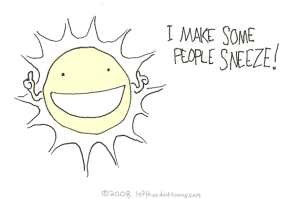I feel like the word “superfood’ is everywhere I look anymore. I can’t even check my email without some company emailing me about the latest trend in superfoods. I see things on twitter, I hear people chatting, I see advertisements, they’re the latest trend and they’re hot. All of this hype got me thinking- how super are these foods? Could this just be an amazingly crafted marketing scheme that we, as the obedient consumers that we have been trained to be, can’t get enough of? Before this post gets too far in, a definition may be helpful in understanding what super foods are all about.

According to MedicineNet.com: Superfood is a non-medical term popularized in the media to refer to foods that can have health-promoting properties such as reducing one’s risk of disease or improving any aspect of physical or emotional health. So-called superfoods may have an unusually high content of antioxidants, vitamins, or other nutrients. MedicineNet.com was also sure to note that there is no accepted medical definition of a superfood.
Perhaps this definition isn’t enough, lets look at the trending superfoods. The lists that come up when looking up superfoods are endless and all seem to have the same exact tag line which follows a standard structure of “(Insert a number between 10-50) Superfoods You Need to be Eating Right Now!” Live Science had a list of the top superfoods at the moment. Some examples that they included were the following:
Blueberries: This particular fruit is popular in the world of superfoods because they are rich in vitamins, fiber, phytochemicals- which are important for disease protection, and antioxidants.
Beans : These are a staple in any list of superfoods for many reasons. Beans have many benefits that include being a source of low-fat protein, insoluble and soluble fiber, and vitamins and minerals. Live Science also noted that many of these vitamins and minerals in beans are missing from the diets of many Americans.
Kale: This leafy green has to be one of the most popular superfoods at the moment. Like other dark veggies, kale is full of vitamins such as A, C, and K, fiber, and calcium.
Healthline took a closer look at superfoods and raised a question much like my own: “Are superfoods really good for you or just marketing hype?” This article points out that yes, these superfoods are packing that punch in the face healthiness that we are all looking for, but one researcher stated “Practically everything in the produce department is a superfood.” You can the nutritional benefits by eating a variety of fruits and vegetables, eggs, walnuts, and yogurt. I think that as consumers, we have a tendency to always be looking for the hot new thing, and food is not immune to that. Sure, we can get just as many antioxidants from blueberries, but the acai berry sounds more exotic and interesting- and is twice the price, so it must be good, right?
We need to take our consumer blinders off and start to understand what we eat and how it benefits us instead of following fads and paying too much money for great marketing. Woman’s Day has a great article for those of us that want the great benefits of superfoods, but can’t shell out the cash. They compiled a list of foods that are cheaper and healthier than the pricier super foods. For instance, another trendy super food is quinoa due to it being packed with fiber, packed with good carbs, and being gluten free. The downside is that it comes in at about $8.00 a box. Woman’s Day offered an alternative that is more than half the price and has an added health benefit that quinoa lacks and that would be the sweet potato. As well as fibers and such, it also contains beta-carotene due to its orange color which helps skin warn of UV ray damage from the sun.
So what does all of this mean? Are superfoods a total sham? No, they aren’t a completely a marketing scheme, but they certainly are a bit overrated. So when shopping for your superfoods, understand that there are more than just kale, quinoa, and exotic fruits.
 There is no set in stone scientific to fully explain this, but there are many theories that float around. Live Science explained that sun sneezes occur because of pupillary light reflex, which is when your pupils shrink when stimulated by a bright light. Science line explained that a photic sneeze reflex is caused by a confusion of nerve signals in pathways close to one another. It is hypothesized that for sun sneezers the pupillary light reflex sends signals to the brain to constrict the pupils when exposed to bright sunlight but there is a crossed wire that makes a sneeze happen as well.
There is no set in stone scientific to fully explain this, but there are many theories that float around. Live Science explained that sun sneezes occur because of pupillary light reflex, which is when your pupils shrink when stimulated by a bright light. Science line explained that a photic sneeze reflex is caused by a confusion of nerve signals in pathways close to one another. It is hypothesized that for sun sneezers the pupillary light reflex sends signals to the brain to constrict the pupils when exposed to bright sunlight but there is a crossed wire that makes a sneeze happen as well.



![1401534_1608710976009370_2658982037752861974_o[1]](https://sites.psu.edu/siowfa15/wp-content/uploads/sites/29639/2015/09/1401534_1608710976009370_2658982037752861974_o1-300x199.jpg)